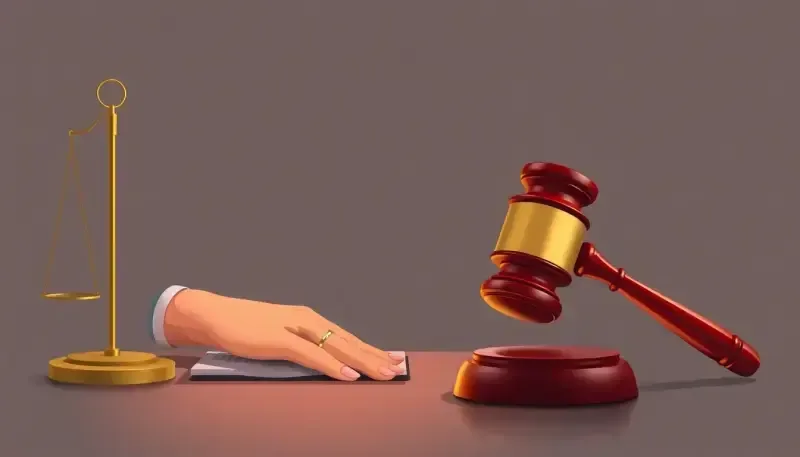The death of a loved one is an incredibly painful experience that can leave family and friends grappling with grief and confusion. When this death occurs due to someone else's negligence or wrongful actions, it adds a layer of complexity and urgency to the situation. Those left behind often feel the need to seek justice and accountability, making a wrongful death lawsuit a crucial avenue for many.
Understanding the legal framework surrounding wrongful death can help individuals navigate their emotions and the legal system effectively. This article aims to provide a comprehensive overview of wrongful death lawsuits, detailing their nature, the parties involved, and the processes that follow such tragic events.
Understanding wrongful death: A legal perspective
Wrongful death is defined as a legal term referring to a situation where a person dies due to the negligent, reckless, or intentional actions of another party. This concept allows the survivors of the deceased to pursue legal action, assuming that the deceased person would have done so had they survived.
In the United States, wrongful death laws vary slightly by state, but they generally share common elements. These laws were established in response to the need for accountability in situations where negligence leads to a tragic loss of life. Each state has its own specific criteria, but the following two conditions are typically necessary to file a wrongful death claim:
- The death was caused by the actions or omissions of another party.
- The actions can be classified as negligent, reckless, or intentional.
Who is eligible to file a wrongful death claim?
The eligibility to file a wrongful death lawsuit is usually restricted to specific individuals closely associated with the deceased. These people, often referred to as "real parties in interest," include:
- The surviving spouse of the deceased.
- Children, both biological and adopted, who were financially dependent on the deceased.
- Parents and siblings of the deceased.
- Life partners or individuals who believed they were married to the deceased.
- Parents of a fetus in cases of miscarriage or abortion resulting from negligence.
While many people may mourn the loss, the law typically recognizes only the immediate family and dependents as having the legal standing to pursue a wrongful death claim. This limitation is designed to ensure that the lawsuit is filed by those who have suffered the most significant impact from the loss.
Elements of a wrongful death claim
A wrongful death claim typically consists of several critical elements that must be established to succeed in court. Understanding these elements can help potential plaintiffs prepare their cases more effectively. The following are the essential components:
- Proof of Death: A clear and verifiable cause of death is necessary, usually established through medical records or death certificates.
- Negligence or Fault: The plaintiff must demonstrate that the death was caused by the negligence or wrongful act of another party.
- Survivor Standing: The claimant must prove their relationship to the deceased, confirming that they are eligible to file the lawsuit.
- Damages: The plaintiff must provide evidence of the losses suffered due to the death, which can include emotional distress, loss of companionship, and financial support.
Types of damages in a wrongful death lawsuit
While no amount of money can replace the loss of a loved one, compensation can help provide financial security for those left behind. The types of damages awarded in a wrongful death lawsuit generally fall into two categories:
- Economic Damages: These include quantifiable losses such as medical expenses incurred before death, funeral costs, and lost wages that the deceased would have earned.
- Non-Economic Damages: These damages cover more subjective losses, such as emotional suffering, loss of companionship, and loss of guidance for children.
Each wrongful death case is unique, and the amount of compensation awarded will depend on the specific circumstances surrounding the death and the impact on the survivors.
Maximum payout for wrongful death cases
The maximum payout for wrongful death lawsuits can vary significantly based on numerous factors, including state laws, the circumstances of the case, and the damages suffered. Generally, there is no cap on the amount that can be awarded for economic damages; however, some states have limits on non-economic damages.
Factors that can influence the payout include:
- The age and income of the deceased.
- The number of dependents.
- The degree of negligence involved.
- State laws governing wrongful death claims.
It is crucial for plaintiffs to consult with an attorney experienced in wrongful death cases to get a clearer understanding of the potential compensation based on their situation.
The importance of legal representation
Engaging a qualified attorney who specializes in wrongful death can make a significant difference in the outcome of a case. A skilled lawyer can help navigate the complex legal process, ensuring that all necessary elements of the claim are met and that the survivors receive the compensation they deserve.
Legal representation provides several benefits, including:
- Expertise in handling wrongful death claims and understanding state-specific laws.
- Ability to gather and present evidence effectively.
- Negotiation skills for potential settlements with insurance companies or defendants.
- Support during a difficult emotional time, allowing family members to focus on healing.
For those considering a wrongful death lawsuit, seeking experienced legal counsel is an essential step toward achieving justice and closure.
For further insights into wrongful death lawsuits, you may find this video helpful:
In conclusion, understanding the intricacies of wrongful death lawsuits is vital for those affected by such tragic circumstances. By knowing the legal framework, eligibility, potential damages, and the importance of proper representation, survivors can navigate this challenging process with greater clarity and hope for justice.

